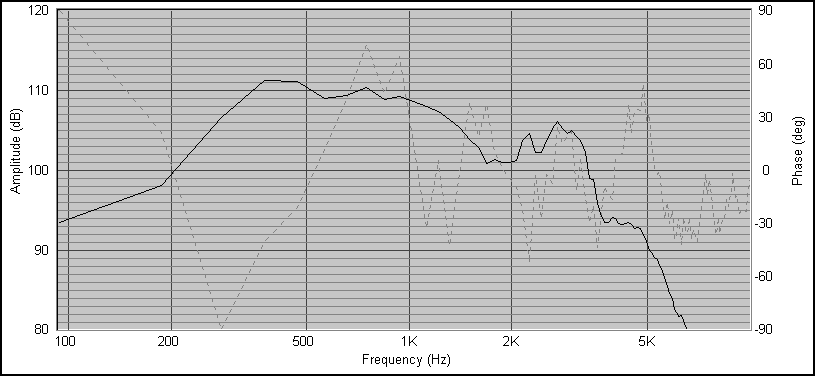I saw falling response in the simulations too but I kind of expect that in midhorns and tweeters. David McBean has done a wonderful job with Hornresp, and I've grown to trust it implicitly for modeling basshorns. It's less reliable on midhorns and tweeters, only because it uses a pistonic model. You have to measure a speaker to see what its behavior is like above the pistonic range.Above a few hundred Hertz, the cone is no longer pistonic and areas of the cone are decoupled from the rest. This creates what is effectively a lower-mass section that operates semi-independently from the main body of the cone. At high frequency, this behavior is what makes a big part of the total response. They key is to use drivers with good damping, so these higher frequency modes are smooth. Voice coil cover shape and composition plays a major role in the response up high. Below you'll see the response curve of the midhorn with a Delta 10 driver; Other drivers will measure differently.








